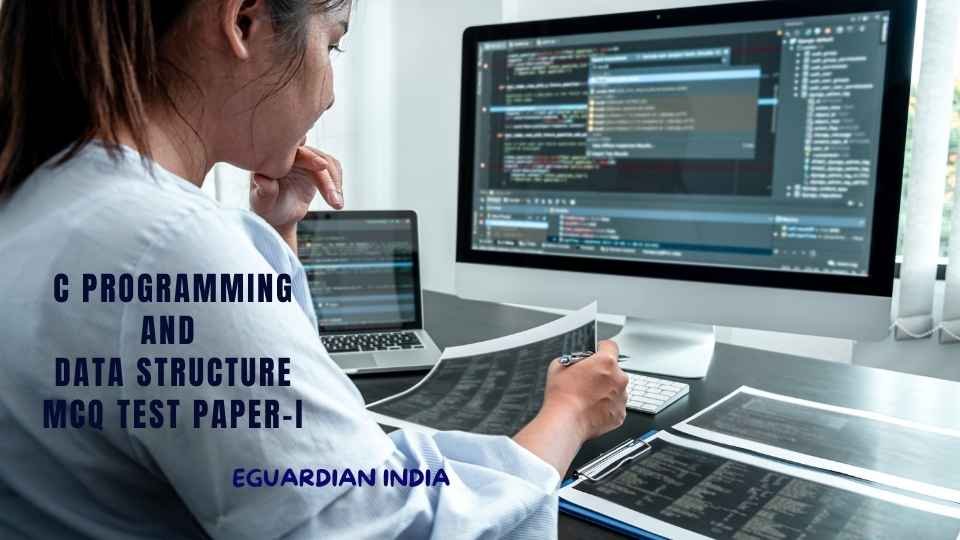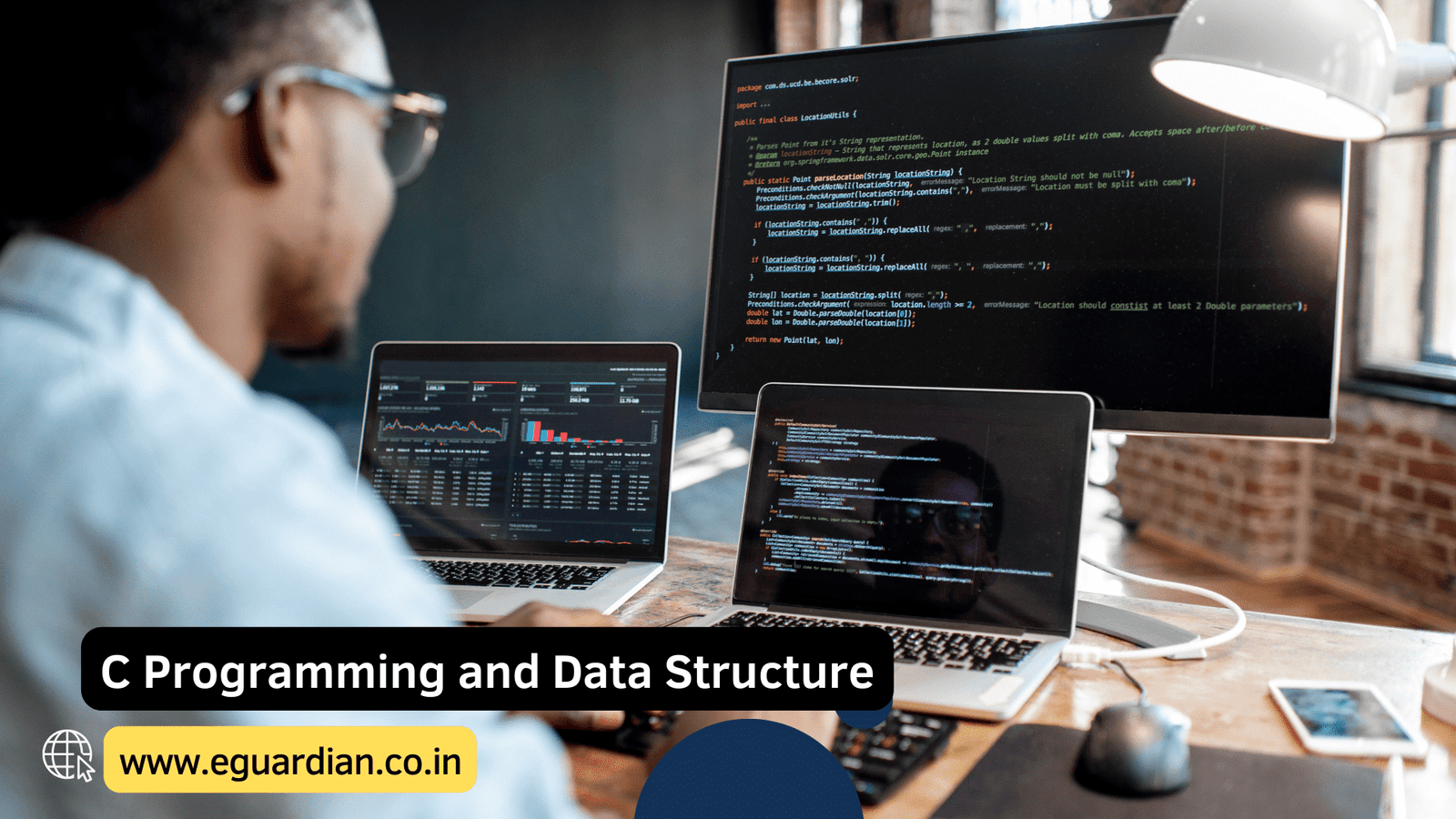System Software MCQ with Answers for IT courses like MCA, BCA and Competitive and academic examinations of various Institutes.

System Software MCQ with Answers
Here’s a set of MCQs to assess your grasp of System Software of IT courses like MCA and BCA:
1. ___ translates mnemonic instructions into machine code.
Ans. Assembler
2. Maximum memory available on a SIC/XE system is ___.
Ans. 1 megabytes
3. In ___ addressing Mode, operand address goes as it is.
Ans. Direct
4. 8086 CPU has ___ bit data bus and ___ bit address bus.
Ans. 16-bit data, 20-bit address
5. 8086 microprocessor consists of ___ transistors.
Ans. 2900
6. The prefetched instruction bytes are stored in a first in the first out group of registers called an___
Ans. Instruction queue
7. ___ register shows changes produced by the execution of an instruction.
Ans. Flag
8. ___ are the time-multiplexed address and data lines.
Ans. AD0-AD15
9. ___ Instructions transfer data among variables.
Ans. Data Transfer
10. 8086instructions may be categorized as ___ and ___.
Ans. Sequential control flows instructions and control transfer instructions.
11. In ___ addressing mode, the data is stored in a register and it is referred to using the particular register.
Ans. Register
12. In ___ addressing modes, immediate data is a part of instruction and appears in the form of successive byte or bytes.
Ans. Immediate
13. The interrupt generated by a program is called ___.
Ans. Software Interrupt
14. In 8086 ___ instruction generates a software interrupt.
Ans. int
15. Software which bridges a specification or execution gap is called ___.
Ans. Language Processor
16. A ___ bridges the execution gap to the machine language of a computer system.
Ans. Language Translator
17. CPU uses ___ to note the address of the next instruction to be executed.
Ans. Instruction Pointer
18. ___ And ___ are the two popular models for program execution.
Ans. Translation and Interpretation
19. Analysis of Source Program (SP) + Synthesis of Target Program (TP) is called ___.
Ans. Language Processing
20. A ___ of a program entity is a reference to the entity which precedes its definition in the program.
Ans. Forward reference
21. A grammar in which no productions contain two or more consecutive NTs in any RHS alternatives called ___
Ans. Operator grammar
22. Association of an attribute of a program entity with a value is called ___.
Ans. Binding
23. A binding performed before the execution of a program begins is called ___.
Ans. Static binding
24. Language processor development tools (LPDTs) focuses on the generation of the ___ phase of language processors.
Ans. Analysis
25. Two LPDTs widely used in practice are ___ and ___.
Ans. LEX and YACC
26. A System Software which accepts assembly language program as input and produces its equivalent machine language program as output is called ___.
Ans. Assembler
27. The most important table which contains information concerning all identifiers used in the Source Program is ___
Ans. Symbol table
28. The ___ performs memory allocation and code generation
Ans. Back end
29. The lexical and syntactic features of a programming language are specified by its ___.
Ans. Grammar
30. A rule of the grammar also called a rewriting rule is ___.
Ans. Production
31. A unit of specification of program generation through expansion is called ___.
Ans. Macro
32. The System Software which places the object code into the main memory during execution is called ___.
Ans. Loader
33. The instructions present in the source program used to instruct the assembler to perform certain actions during the translation of a program are called ___.
Ans. Assembler directives
34. The assembler directive simply equates a symbolic name to a numeric value is called ___.
Ans. EQU
35. A reference of a label, which is defined later in the program is called ___.
Ans. Forward Reference
36. Each reading of a program can be called as a ___.
Ans. Pass
37. A data structure used for maintaining the details (attributes) about the instructions of the instruction set of any machine is called ___.
Ans. Mnemonic Table
38. The table maintains the details of the Pseudo instructions or assembler directive is called ___.
Ans. Pseudo Instruction Table
39. The assembler that does not write object program out and does not need a loader is called___.
Ans. Load and Go Assembler
40. The phase which scans the assembly language program completely and analyses the same can be also called as ___.
Ans. Analysis phase
41. The assembler uses the ___, ___ for the pass1.
Ans. Location counter, mnemonics table
42. The use of the macro name with a set of actual parameters is replaced by some code generated by its body is called ___.
Ans. Macro expansion
43. A macro definition is enclosed between a ___ statement and a ___ statement.
Ans. Macro header and Macro end.
44. A preprocessor statement can alter the flow of control during expansion such that some model statements are never visited during expansion is called ___.
Ans. Conditional expansion
45. The flow of control during macro expansion is implemented using ___.
Ans. Macro expansion Counter
46. Expansion of nested macro calls follows ___ rule.
Ans. Last-in-first-out (LIFO)
47. Variables which can only be used during the expansion of macro calls are called ___.
Ans. Expansion time variables (EV’s)
48. A model statement is visited only under specific conditions during the expansion of a macro is ensured by ___ and ___ statements.
Ans. AIF, AGO statements
49. The generation of instructions tailored to the requirements of a specific usage is called ___.
Ans. Semantic Expansion
50. A data structure, which maintains the names and addresses (pointers) where the macro definition is available is called ___.
Ans. Macro Name Table
51. The process of bringing the object program into the memory for execution is called ___.
Ans. Loading
52. When a computer is first turned on or restarted, a special type of absolute loader executed, which is called ___.
Ans. Bootstrap Loader
53. The first program loaded by Bootstrap to be run by ___
Ans. An Operating System
54. Loaders that allow for program relocation are called ___.
Ans. Relocating Loader
55. Each part of the object code that must be changed when the program is relocated is described in ___.
Ans. Modification record
56. In the case of Relocation bits, the bits corresponding to unused words are set to ___.
Ans. Zero
57. Capability that eliminates some of the need for the loader to perform program relocation is called ___.
Ans. Hardware relocation
58. Some common alternatives for organizing the loading functions are ___.
Ans. Relocation and linking
59. Loaders which perform all linking and relocation at load time are called ___.
Ans. Linking loaders
60. ___ perform linking prior to load time.
Ans. Linkage editor
61. Linking in which the linking function is performed at execution time is called ___.
Ans. Dynamic linking
62. A loader which loads OS and prepares it for execution is called ___.
Ans. Bootstrap loader
63. The functions or variables that are present in the module represented by the object, and which should be available for use by other modules are called ___.
Ans. Defined or exported symbols
64. The functions or variables that are called or referenced by this object, but not internally defined are called ___.
Ans. Undefined or imported symbols
65. The linker processes a set of object modules to produce a ready to execute program form called ___.
Ans. Binary program
66. The process of modifying the addresses used in the address sensitive instructions of a program such that the program can execute correctly from the designated area of memory is called ___.
Ans. Program relocation
67. A symbol pub_symb defined in a program unit which may be referenced in other program units is called ___.
Ans. Public definition
68. A reference to a symbol ext_symb which is not defined in the program unit containing the reference is called ___.
Ans. External reference
69. The process of binding an external reference to the correct link-time address is called ___.
Ans. Linking
70. The relocation requirements of a program are influenced by ___ of the computer system on which it is to execute.
Ans. Addressing structure
71. For linking, both ___ and ___ of the external symbol must be computed by the linker.
Ans. Segment base address and offset
72. Part of a program which has the same load origin as some other part of the program is called ___.
Ans. Overlays
73. Code to perform the relocation of an address sensitive instructions exists as a part of the program is called ___.
Ans. Relocating logic
74. Program which can be processed to relocate it to a desired area of memory is called ___.
Ans. Relocatable programs
75. Program which can perform the relocation of its own address sensitive instructions is called ___.
Ans. Self-relocating program
Web Technology MCQ Questions and answers for IT Courses
Conclusion
This is just a sample set, you may explore system software textbooks or online resources like gkseries.com, edurev.in for more in-depth learning and a wider range of practice questions. By mastering these concepts, you’ll gain a strong foundation for your IT studies in MCA or BCA.



